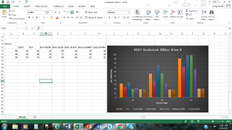Understood.
So, after all that, what computer do you use?
Vyper Novo with AI as the primary. A Zoop tied to harness as a backup.
I gave my sons Zoops when they certified as young teenagers. There is a level of trust with the conservatism that means you can trust it with your kids.
.




 .
.
 You really don't have a slightest clue how math actually works do you? Numbers: there's like a lot of them and stuff...
You really don't have a slightest clue how math actually works do you? Numbers: there's like a lot of them and stuff...

 added to Ignore list
added to Ignore list